When you think of a monkey, you probably visualize the capuchin. The capuchin monkey is a well-known primate, often kept as pets and featured in films. However, there is much more to these monkeys than their big screen looks. Here are 10 things you didn’t know about capuchin monkeys.
10. Capuchins Are Movie Stars

Capuchin monkeys have bee featured in hundreds of movies.
©Ondrej Prosicky/Shutterstock.com
You may have never seen a capuchin monkey in the wild, but you’ve likely seen one gracing the big screen. Capuchin monkeys are often used in Hollywood films and are sometimes called the “organ grinder” monkey. Famous stars include Crystal the Capuchin, who was featured in numerous movies, including The Hangover Part II, George of the Jungle, Zookeeper, American Pie, and Night at the Museum. Other movies that cast these cheeky monkeys include Pirates of the Caribbean, Raiders of the Lost Ark, and Doctor Doolittle.
9. Capuchins Love Company
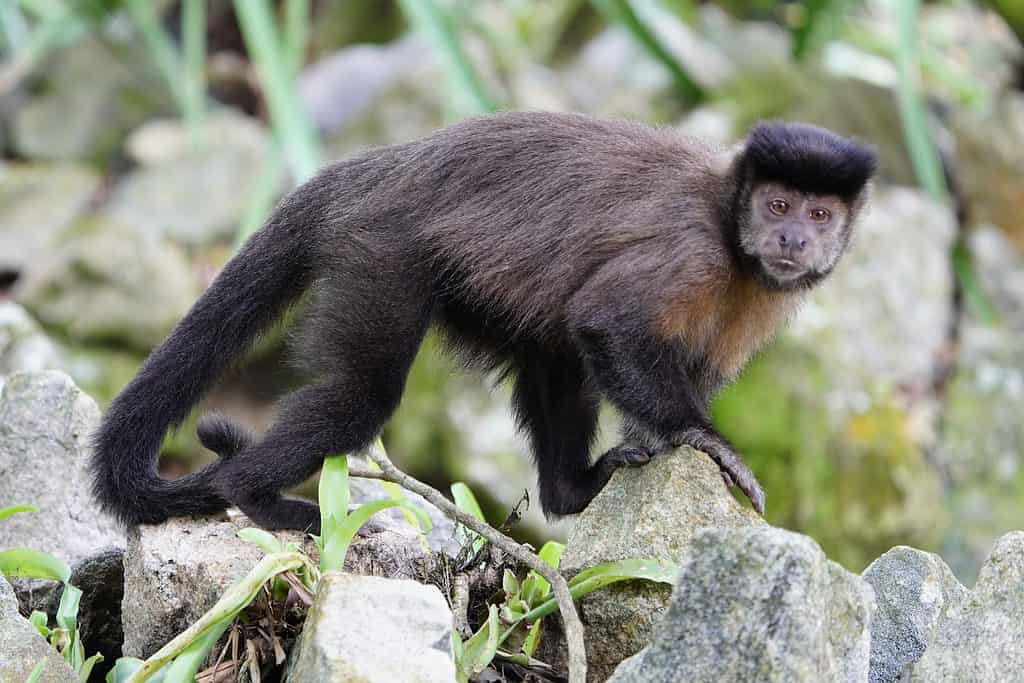
The black capuchin is just one species of this monkey.
©guentermanaus/Shutterstock.com
Like many monkey species, capuchins are highly social and live in large groups of 10-35 animals. They communicate with one another through facial expressions, vocalizations, and grooming. Groups of capuchins (known as troops) are usually composed of a dominant alpha male, several adult females, subadult males and females, and babies.
Capuchins have one baby at a time and become fully mature at seven to eight years for males and four years for females. Females give birth for the first time at around six years of age and remain with their female relatives for their entire lives, while males leave the troop once they reach sexual maturity. The life expectancy for wild capuchins is 10-25 years.
8. Monkeys Don’t Make Good Pets
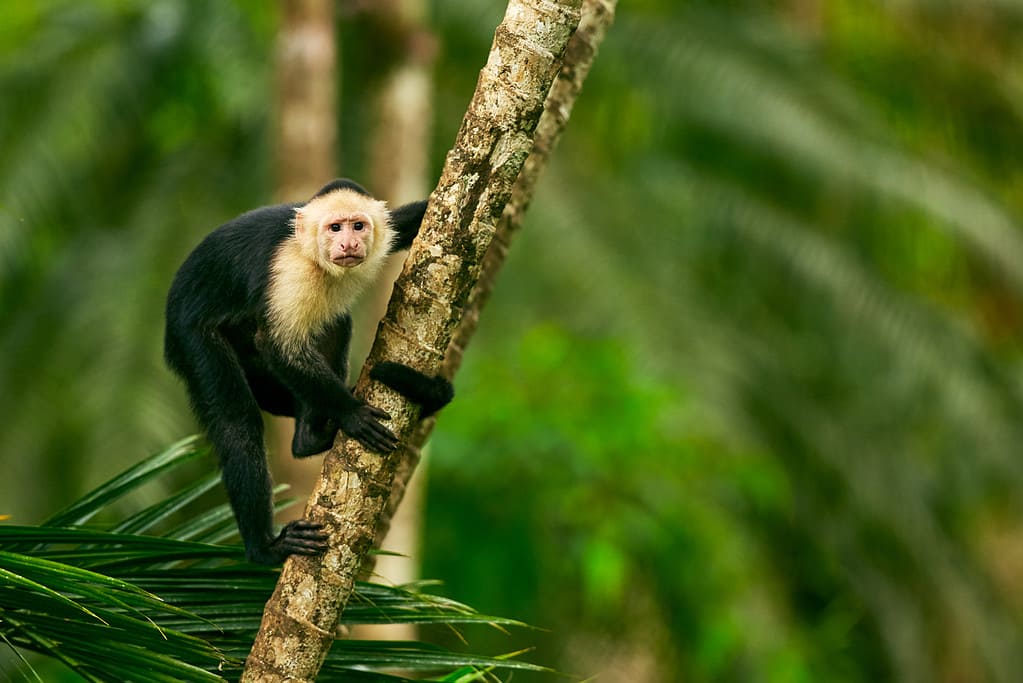
Wild animals should never be kept as pets, and capuchins are no exception.
©Salinger/iStock via Getty Images
Despite what you may see on the silver screen, capuchins do not make good pets. These monkeys are social animals that need the company of other capuchins. They also need lots of room for exercise and plentiful mental stimulation. Without this, capuchins become unhappy and even aggressive. Capuchins also require a specific diet that is difficult to replicate in a captive setting. Feeding them an unbalanced diet can result in illness and developmental issues like bone disease.
Although capuchins can be kept in 25 states in the United States, it’s important to recognize that not all capuchins in the pet trade are treated ethically. Many capuchins are stolen from the wild at a young age before they are sold to be pets. Some are bred in inhumane conditions. Buying a capuchin perpetuates these cycles that are detrimental to the animals.
7. They Are Great Problem Solvers
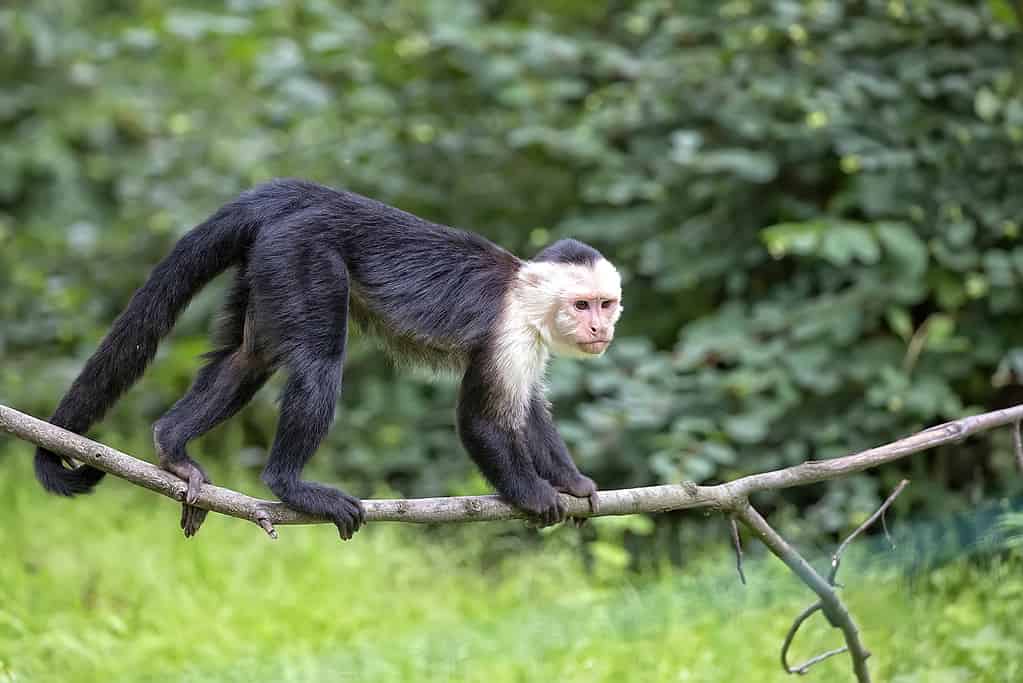
Capuchins are adept climbers thanks to their dextrous hands and prehensile tail.
©johan10/iStock via Getty Images
Capuchins are often considered the most intelligent of the New World monkeys. In addition to catching frogs, they are adept at cracking open nuts. They are incredibly resourceful and use tools to solve problems. Capuchins in Brazil have been using stone tools for over 3,000 years, while monkeys in Panama often use stones to break open hermit crab shells, coconuts, and other hard foods. And it’s not just one or two clever monkeys doing the problem-solving —at one site in Panama, over 80% of the capuchins were seen using tools.
6. Capuchins Throw Rocks to Flirt

Capuchins live in troops of up to 35 monkeys.
©Kenny Borenstein/iStock via Getty Images
In addition to using rocks as tools, female capuchins use rocks for other purposes: To get attention from boys. One research study identified this behavior in bearded capuchin monkeys (Sapajus ibidinosus). Throughout the two-year study, several females in one troop of capuchins threw rocks at males during their proceptive period, when they actively solicit males for reproduction.
5. They Are Very Adaptive
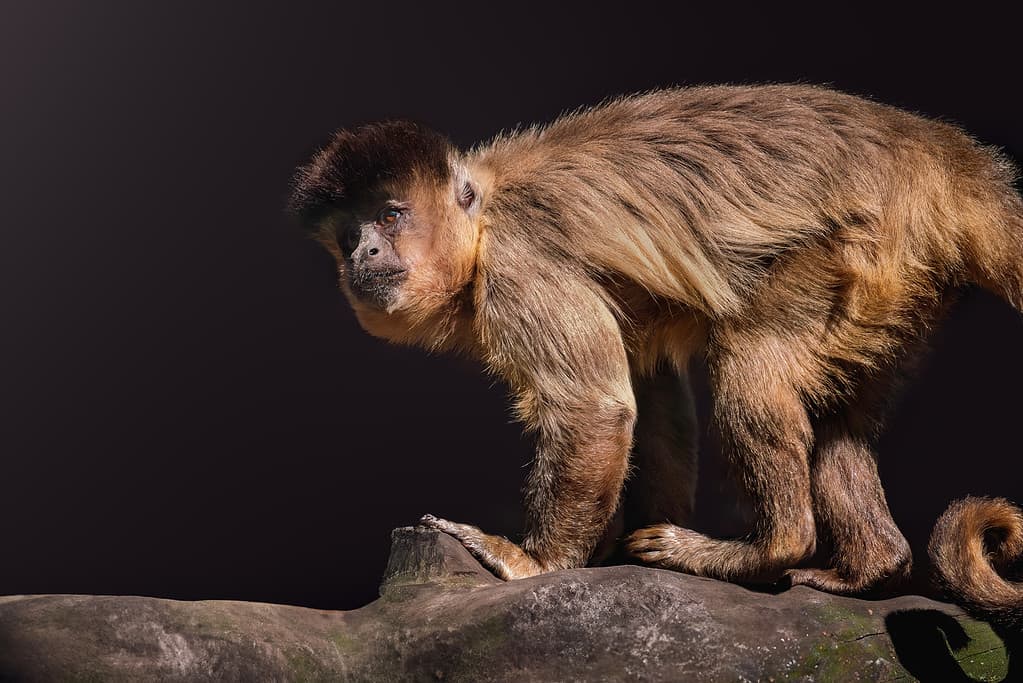
The black-striped capuchin is native to central and northern Brazil.
©diegograndi/iStock via Getty Images
Capuchins are New World monkeys, meaning they are native to South and Central America. The capuchin lives high in the canopies of almost any forest type or in mangroves. They are highly adaptive and have easily adapted to live in areas developed by humans.
4. Capuchins Can Swim
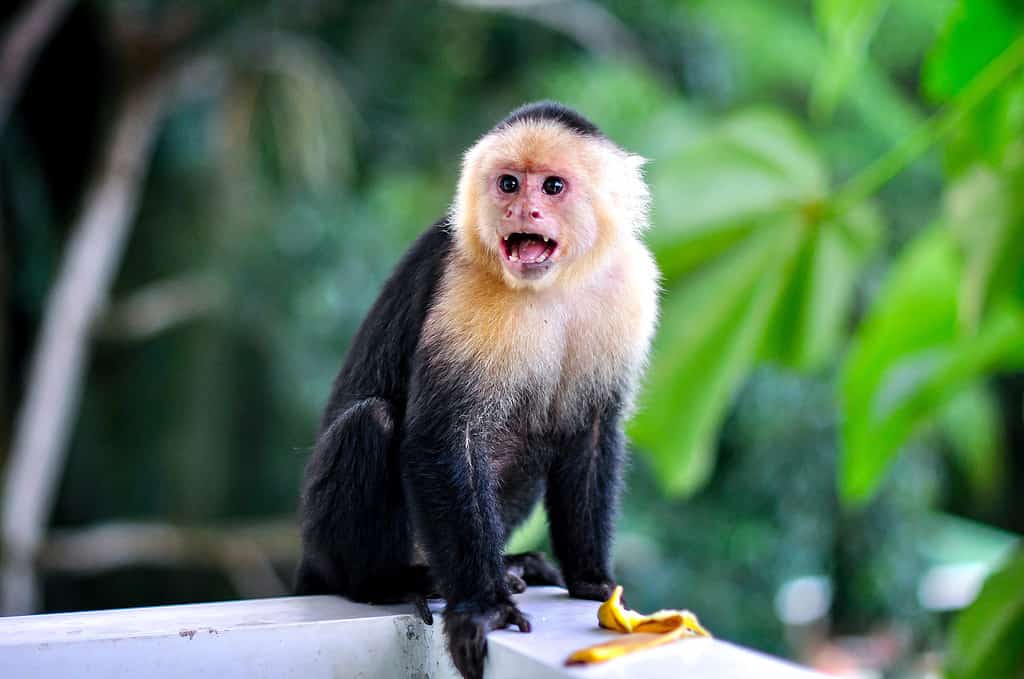
These New World monkeys are omnivores.
©Eric Yeamans/iStock via Getty Images
When capuchins travel through the forest, they move in a single-file line. But they don’t just stick to the treetops: capuchins forage in mangroves when the tide is low. They even catch frogs in the water. To do this, they wade or swim in the water. However, unlike the proboscis monkey they are not adapted for long swimming sessions.
3. There Are Several Capuchin Species

Some capuchin species are blond or brown in coloration.
©Donna Feledichuk/iStock via Getty Images
Capuchins fall under the Cebinae family. This family includes two genera (Cebus and Sapajus), around 28 species, and nine subspecies. The Cebus genus monkeys are gracile capuchins and the Sapajus species are robust capuchins. The white-faced and white-throated capuchins are perhaps the most well-known species, with their distinctive white faces and black bodies. However, capuchin species come in a range of colors and different sizes. Crystal the animal actress is a tufted capuchin monkey.
2. They Use Pee for Bath Water
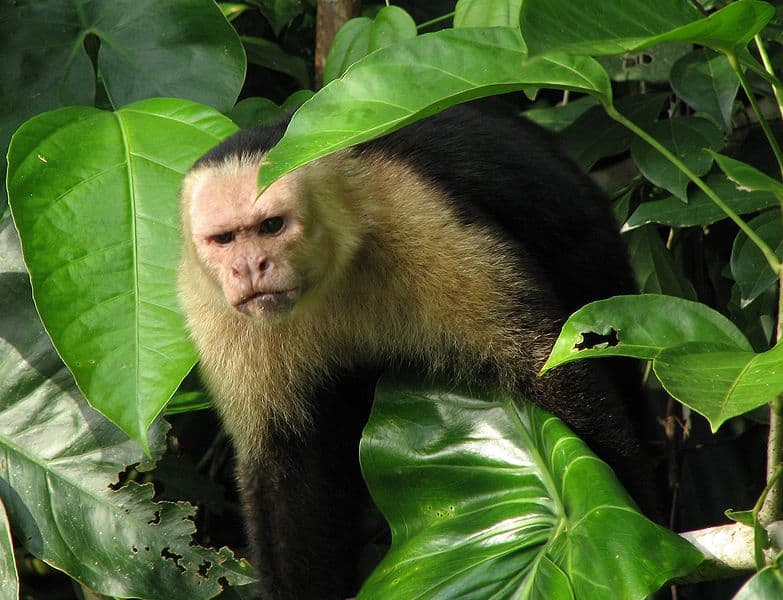
White-faced capuchin are often found in the treetops of tropical forests.
©Puput / Creative Commons - Original
Capuchins are known for a practice called “urine washing.” This is where capuchins pee on their hands and then use it to wash their faces. It is unknown why they do this, but some researchers believe it is a social cue to other monkeys, to either convey sexual desire, show submission to aggressive males, or appease female monkeys.
1. Capuchins Form Their Own Traditions
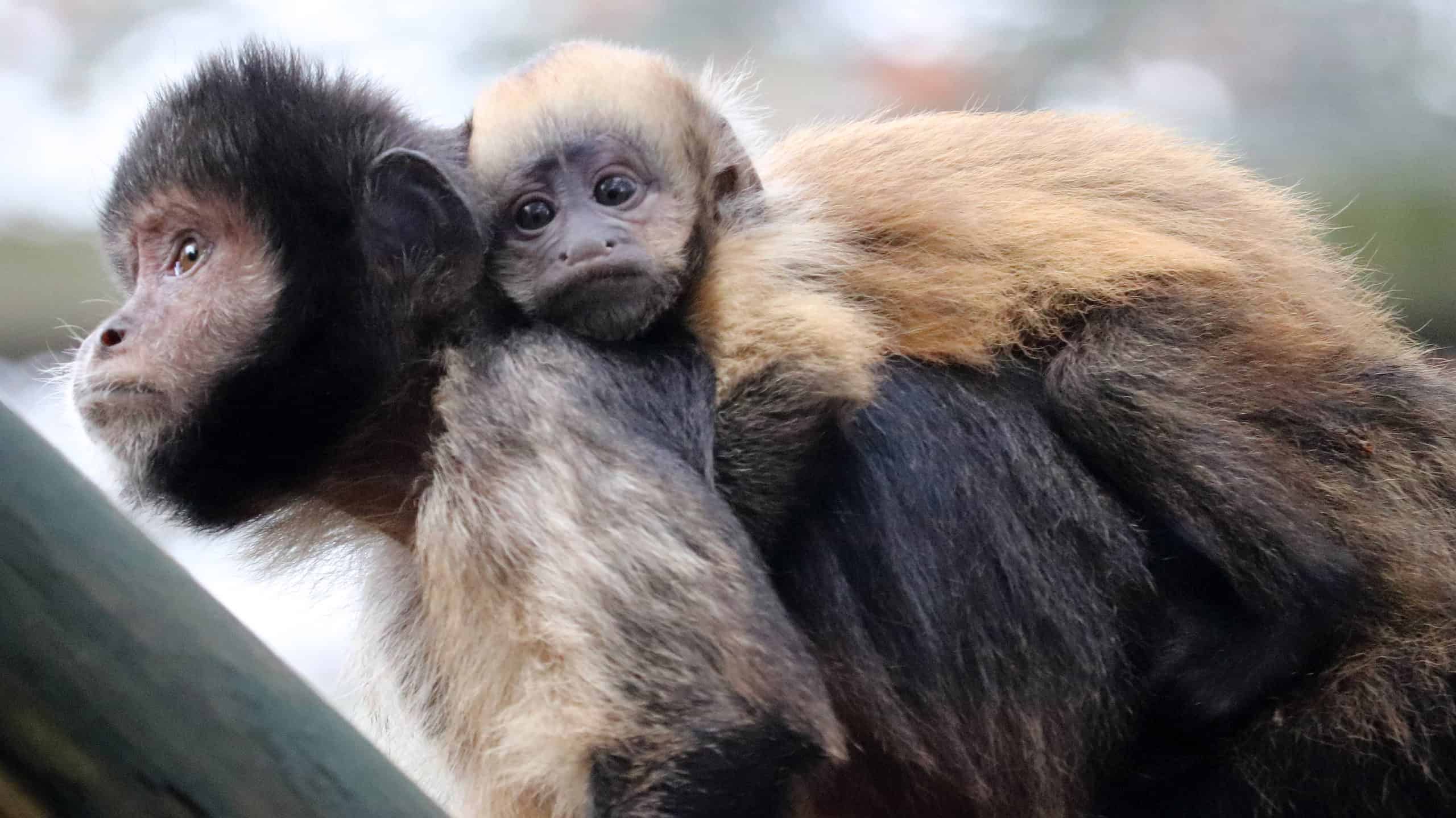
Baby golden-bellied capuchins stay with their mothers for several years.
©Lauren Bilboe/Shutterstock.com
Behaviors vary from troop to troop, and each group forms its own social traditions. Researchers define a capuchin tradition as “a behavioral practice that is relatively long-lasting and shared among members of a group, each new practitioner of the behavior relying to some extent upon social influence to learn to perform the behavior.”
Some capuchins shove their fingers in other monkeys’ eyes. Other behaviors include hair pulling, tail and finger sucking, mouth grooming, and excessive sniffing. However, not all troops exhibit the same behaviors. These are different ways of reinforcing bonds within the group.
The photo featured at the top of this post is © Edwin Butter/Shutterstock.com
Thank you for reading! Have some feedback for us? Contact the AZ Animals editorial team.







